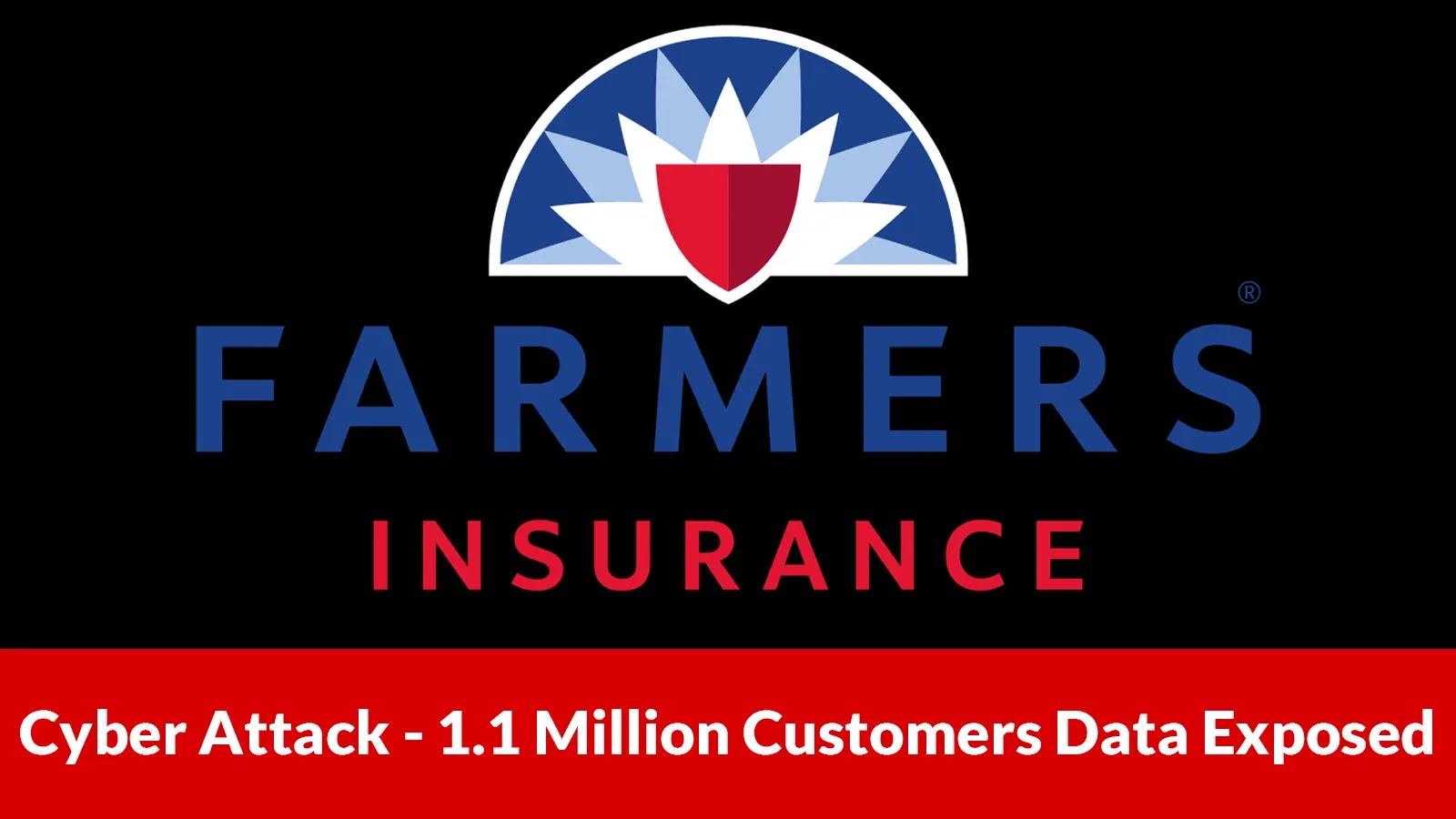
Farmers Insurance Cyber Attack – 1.1 Million Customers Data Exposed in Salesforce Attack
The digital landscape is fraught with peril, and even the most established institutions are not immune. A recent incident involving Farmers Insurance Exchange and its subsidiaries serves as a stark reminder of the pervasive nature of cyber threats. Approximately 1.1 million customer records were exposed, stemming from unauthorized access to a third-party vendor’s database. This breach, occurring on May 29, 2025, highlights the critical vulnerabilities inherent in complex supply chain integrations and the potentially devastating impact on customer trust and data privacy.
Understanding the Farmers Insurance Data Breach
Farmers Insurance Exchange confirmed a significant security incident affecting a substantial portion of its customer base. The breach was not a direct attack on Farmers Insurance’s core systems but rather an exploitation of a third-party vendor’s database. While the specific vendor has not been publicly specified, the nature of the compromise points towards a common attack vector: the supply chain. Attackers gained unauthorized access, compromising sensitive personal information. This incident underscores a critical truth in cybersecurity: an organization’s security posture is only as strong as its weakest link, often residing within its vendor ecosystem.
Impact and Scope of the Exposure
The sheer scale of this breach is alarming, with an estimated 1.1 million customers impacted. This makes it one of the largest insurance industry data exposures reported in the year. While the precise types of compromised data have not been fully detailed in early reports, such breaches typically involve personally identifiable information (PII) such as:
- Names
- Addresses
- Dates of Birth
- Insurance Policy Information
- Potentially other sensitive financial or personal details
The long-term implications for affected customers can include increased risk of identity theft, phishing attacks, and various forms of financial fraud. For Farmers Insurance, the ramifications extend to significant reputational damage, potential regulatory fines, and the erosion of customer confidence.
The Salesforce Connection: A Common Misconception?
The original reference from Cybersecurity News mentions a “Salesforce Attack” in the headline. It’s crucial for a cybersecurity analyst to clarify this. While many organizations, including insurance companies, heavily utilize Salesforce for CRM and other critical operations, the core of the reported incident points to a third-party vendor’s database breach. This could mean:
- The third-party vendor itself uses Salesforce, and the attack was on their Salesforce instance or a system integrated with it.
- The headline might be referencing a common point of integration or data flow, but the direct compromise was on a different system managed by the vendor.
It is paramount to distinguish between a direct compromise of Salesforce’s infrastructure (which would be a monumental and globally impactful event, likely met with rapid CVE assignments) and a breach occurring at a third-party system that integrates with or stores data related to a Salesforce environment. Without further specific details, attributing this directly to a Salesforce vulnerability (e.g., a specific CVE) on Salesforce’s core platform would be speculative and inaccurate. Organizations often extend Salesforce capabilities through numerous integrations and custom developments, and vulnerabilities can arise in these extended ecosystems.
Remediation Actions for Organizations and Individuals
For organizations, especially those in the insurance and financial sectors, this incident serves as a critical warning. Proactive measures are no longer optional but essential for resilience.
For Organizations:
- Enhanced Third-Party Risk Management: Implement rigorous vetting processes, regular security audits, and continuous monitoring of all third-party vendors, especially those handling sensitive customer data.
- Robust Access Controls: Enforce the principle of least privilege for all user accounts, both internal and external. Use multi-factor authentication (MFA) extensively for all critical systems, including vendor portals and APIs.
- Data Minimization and Encryption: Only collect and retain data that is absolutely necessary. Encrypt sensitive data both at rest and in transit.
- Incident Response Plan Review: Regularly test and update incident response plans to ensure swift and effective containment, eradication, and recovery in the event of a breach.
- Security Awareness Training: Continuously educate employees and partners on social engineering tactics and secure data handling practices.
- Vulnerability Management: Conduct regular vulnerability assessments and penetration testing of all systems, including those managed by third parties. Stay updated on and patch known vulnerabilities, such as those listed in CVE databases.
For Individuals (Affected Customers):
- Monitor Financial Statements: Scrutinize bank and credit card statements for any unusual activity.
- Credit Freezes/Fraud Alerts: Consider placing a credit freeze with major credit bureaus (Equifax, Experian, TransUnion) or setting up fraud alerts.
- Change Passwords: Immediately change passwords for any accounts directly or indirectly associated with Farmers Insurance. Use strong, unique passwords for each service.
- Beware of Phishing: Be extra vigilant against phishing emails, texts, and calls that claim to be from Farmers Insurance or related entities. Do not click suspicious links or download attachments.
- Utilize Identity Theft Protection Services: If offered by Farmers Insurance, enroll in their provided identity theft protection and credit monitoring services.
Tools for Data Security and Vendor Risk Management
Effective cybersecurity posture and third-party risk management require a strategic combination of processes and technology. Here are examples of tools that can assist:
| Tool Name | Purpose | Link |
|---|---|---|
| ServiceNow Vendor Risk Management | Automates vendor assessment, risk scoring, and compliance monitoring. | https://www.servicenow.com/products/vendor-risk-management.html |
| Prevalent Third-Party Risk Management | Comprehensive platform for assessing, monitoring, and managing third-party risks. | https://www.prevalent.com/ |
| Darktrace AI Cyber Security | Uses AI for autonomous threat detection, responding to novel attacks across the ecosystem. | https://www.darktrace.com/ |
| Trellix (formerly McAfee) Data Loss Prevention | Prevents sensitive data from leaving an organization’s control, supporting encryption and policy enforcement. | https://www.trellix.com/en-us/solutions/data-loss-prevention.html |
| Tenable Nessus | Vulnerability scanner for identifying security weaknesses in systems and applications, including third-party ones if access is granted. | https://www.tenable.com/products/nessus |
Lessons Learned from the Farmers Insurance Incident
The Farmers Insurance data breach underscores several critical lessons for the modern enterprise. Firstly, the attack surface extends far beyond an organization’s immediate perimeter; it encompasses every vendor, partner, and integration point. Robust vendor risk management is no longer a compliance checkbox but a foundational element of cybersecurity strategy. Secondly, the rapid evolution of threats necessitates proactive, aggressive security measures, including continuous monitoring and immediate patching—even for vulnerabilities that may not yet have a formal CVE assigned if they are being actively exploited. Finally, transparency with affected customers and swift, actionable advice are crucial for maintaining trust in the wake of a security incident.





